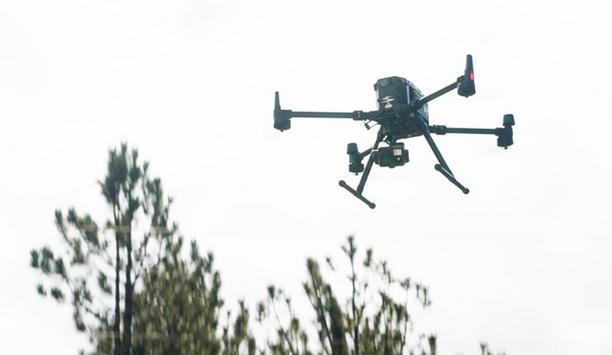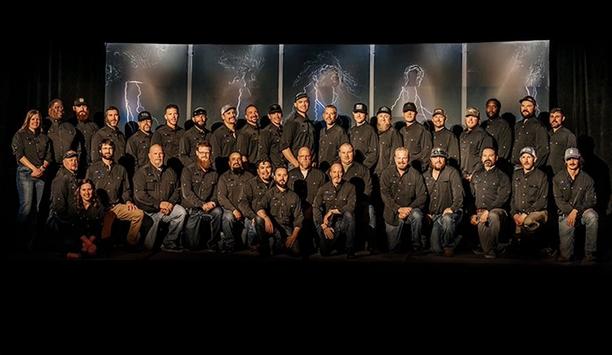CORE Electric Cooperative - Experts & Thought Leaders
Latest CORE Electric Cooperative news & announcements
As part of CORE’s annual maintenance program, an FAA-certified contractor is continuing to operate unmanned drone aircraft in the utility right-of-way in the Greenland-Palmer Lake area now through February. The drones will be used to visually inspect roughly 1,700 poles and electrical equipment, after which CORE crews and contractors will make repairs to any identified deficiencies. Along with their drone contractors, they will likely see CORE lineman inspecting poles and equipment on foot. They use their drone and foot patrol simultaneously to be as efficient and thorough as possible. CORE is committed to maintaining a safe and reliable system. They appreciate users' understanding while they complete this important work.
To maintain the grid and deliver reliable power during times when the members typically consume the most energy, CORE applies a demand charge to most accounts. Starting with March 2024 bills, the demand charge for residential members will be $3 multiplied by their peak demand, which is the highest amount of usage (in kilowatts) that occurs within one 60-minute period during the 'on-peak' hours between 4 p.m. and 8 p.m. Power-hungry devices For non-residential members, the demand charge varies by rate schedule, and peak demand occurs within one 15-minute period during the billing cycle. The simplest way for residential members to reduce their peak demand — and resulting demand charge — is to spread out their use of appliances and other power-hungry devices between 4 p.m. and 8 p.m. The demand charge varies by rate schedule, and peak demand occurs within one 15-minute period Non-residential members can reduce their peak demand by staggering power consumption throughout the day — not just the 4 p.m. to 8 p.m. window. Peak demand occurs only once per month for both residential and non-residential members. If the peak demand within a billing cycle is 8 kilowatts, the demand charge will be based on that single 60- or 15-minute period, even if the demand reaches 7 kW any other time during the same billing cycle. Account management platform The peak demand for the most recent billing period can be found under the Energy Use on the first page of the CORE monthly bill. The demand charge appears under the Current Activity portion on the second page of their monthly bill. Users can identify their daily and monthly peak demand via the Usage Explorer in the SmartHub account management platform. Click on the My Cooperative tab, then Rates and Regulations, for more information about the demand charge. Staggering power consumption Here are two scenarios to illustrate for residential members the savings that are possible by staggering power consumption rather than stacking it: Scenario A: Stacking - A member decides to begin cooking a roast at 5 p.m., at the same time they start a cycle in the dishwasher and throw a load of laundry into the dryer. Assuming the oven and dryer have the same wattage of about 4 kilowatts (kW) and the dishwasher’s is 2 kW, the member’s peak demand during that 5 p.m. hour will be around 10 kW (4 + 4 + 2), which will generate a demand charge of $30 as of March 2024. Scenario B: Staggering - A member opts to first cook the roast at 5 p.m., dry clothes at 6 p.m., then run a load of dishes at 7 p.m. Their peak demand during that three-hour window does not exceed 4 kW, which produces a demand charge of $12 — a savings of $18 over Scenario A.
Earlier this month, as part of National Lineworker Appreciation Day, they celebrated the teams that work every day to keep CORE’s best-in-class system delivering safe, reliable power to the members. CORE’s aggressive system improvement and wildfire mitigation programs mean crews spend their days repairing or replacing electrical lines and components. Power interruptions Crews are always prepared for outage response, everyday unexpected power interruptions, as well as outages due to emergency situations such as storms, high winds or other catastrophic events. “I am proud to recognize our incredible lineworkers’ dedication to our members and communities,” said Pam Feuerstein, CORE Chief Operating Officer. Adapt to new standards CORE’s lineworkers consistently strive to improve their knowledge and skills to adapt to new standards, equipment, and technology and ensure their competence and safety. To showcase their skill and ability, lineworkers participate in line rodeos, putting their skills to the test and demonstrating their ability to react to unexpected situations. The members are invited to attend the upcoming Mile High Lineman’s Rodeo, where lineworkers from across Colorado will show their stuff. CORE Electric Cooperative is proud of the dedicated lineworkers who work tirelessly to provide the members The Energy to Thrive.








